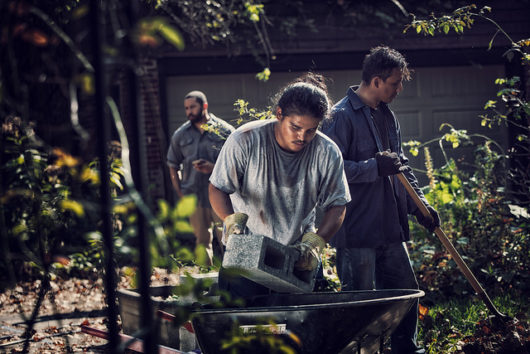Top 10 Solutions to Human Trafficking

The fight against human trafficking can be evaluated in three categories: what is being done, how it is being done and why it is being done. Human trafficking consists of the transferring, harboring and receipt of a person or persons. It is often done in violent or deceptive ways, using threat, coercion, payments and a clear abuse of power. Finally, the main motive behind human trafficking is exploitation, in most cases sexual exploitation or forced labor.
People all over the world are victims of human trafficking, both in their own countries and abroad. Because this is a widespread issue with varying levels, it becomes increasingly challenging to address it with a single set of laws or policies. While many countries have adopted their own policies for addressing this international issue, there are many things that people everywhere can do to join the fight against human trafficking. Some of the solutions for this problem are presented in the text below.
Top 10 Solutions to Human Trafficking
- Fundraising. Holding a fundraiser and donating the money raised to one of the countless organizations that help to fight human trafficking not only gives money to the cause but also brings awareness to the issue. Most organizations working to fight human trafficking are nonprofit organizations that rely on donations. Holding fundraisers helps maintain these nonprofits.
- Volunteer. Volunteering time and effort to an anti-trafficking organization is a great way to contribute to the fight against human trafficking. In addition to helping the organization itself, the more volunteers there are, the greater the outreach can be. For example, Unseen is a nonprofit organization that helps victims of human trafficking by providing specialist care to help them along the road to recovery. There are several volunteer roles with Unseen, ranging in levels of time commitment.
- Be aware of the signs of human trafficking. Being educated on signs that could indicate someone is a victim of human trafficking increases the likelihood of reporting and could give a voice to victims who do not feel comfortable speaking out for themselves. Signs that someone is a victim of human trafficking come in several categories. Poor work and living conditions, poor mental health and lack of control are some of the main areas to look for.
- Advocate. Meeting with or reaching out to local, state and federal representatives informs them that their constituents are passionate about fighting human trafficking, and brings the issue to their attention. This increases the likelihood that they will do something about it. The Trafficking Victims Protection Act of 2000, for example, is the cornerstone of anti-trafficking legislation in America, yet it expired in 2011. Anti-trafficking nonprofits all over the country band together to advocate for its re-authorization, which was granted in 2013.
- Hold events to raise awareness. Raising awareness for human trafficking can also get more people involved and interested in joining the fight. It can create a chain reaction, leading to more people lobbying, fundraising and educating themselves. Regardless of what the event is, they are efficient ways to raise awareness for a cause and gain new followers.
- Boycott products and companies that permit human trafficking. Many goods produced in the United States and abroad are products of victims of human trafficking. Being conscientious about the products consumed and the companies supported is an easy way to contribute to the fight against human trafficking. An easy way to find out what products contribute to a “slavery footprint,” is the Department of Labor’s List of Goods Produced by Child Labor or Forced Labor.
- Help survivors. Donate clothes and other goods to shelters for victims of human trafficking. Also, encourage businesses to give jobs to survivors, helping them get back on their feet and get a fresh start. If applicable, offering legal advice to survivors allows them an opportunity to not only move forward but to gain justice. Helping survivors and contributing to their recovery stops the cycle of trauma in its tracks and ensures it won’t repeat itself.
- Stay informed. There are many anti-trafficking nonprofits with blogs and updates that people can subscribe to, keeping them in the loop of any new information or solutions to human trafficking. For example, the nonprofit organization Polaris Project offers updates via email for anyone who chooses to subscribe.
- Report suspicions – It is important to know the resources available. When traveling abroad, it is beneficial to look up the emergency phone number of the given country, to enable quick reports should a trafficking victim be spotted.
- Help combat the demand. The main factor that keeps human trafficking such a big issue is the constant demand for cheap labor and exploitation. Traffickers often turn to websites such as Craigslist and Backpage to target vulnerable potential victims. Enforcing stricter validity checks on websites like these and offering jobs through more reliable online platforms is attacking the problem at its root, and stopping human trafficking before it even begins.
These solutions to human trafficking can be applied to the lives of people everywhere, helping everyone feel like they are joining the fight against this international issue. At the political level, however, there is also a lot being done to combat human trafficking. In 2000, the U.S. Congress passed the Trafficking Victims Protection Act, establishing what is now called the 3Ps: punish traffickers, protect victims, and prevent this problem from reoccurring. There is great progress being made on a grander scale, but by working towards these solutions and implementing them into everyday life human trafficking can become a more manageable problem.
– Charlotte Kriftcher
Photo: Flickr
